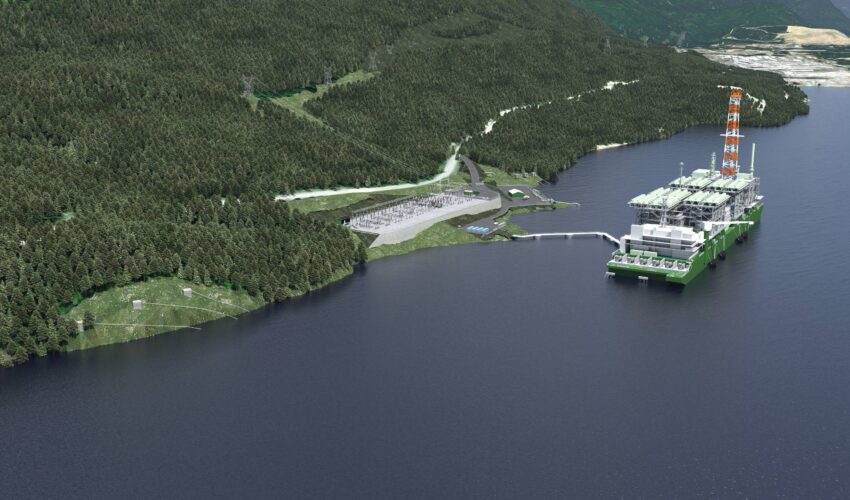It has been a busy summer for Cedar LNG as we continue to advance Canada’s first Indigenous majority-owned LNG facility, in alignment with Haisla Nation values. When Haisla Nation set out to develop a world-class floating LNG facility, they placed their values of environmental protection, safety, and sustainability at the forefront.
Cedar LNG will be the first floating LNG (FLNG) facility in Canada – one of only a handful of such facilities worldwide. Since submitting our Environmental Assessment in 2022, we have continued to refine our design and enhance our capabilities by bringing leading experts into our team. As part of our commitment to continuous improvement, we have been able to identify updates to the original design that are enabling us to develop the best project possible.
We are pleased to provide the following update about recent developments, including preparation for construction of the Transmission Line in an approved alternate corridor and an upcoming Application for amendments related to the operations phase.
Transmission Line Alignment and Construction
Cedar LNG is preparing for the construction of its Transmission Line, which will deliver renewable power from the Minette Bay substation to the FLNG during operations. Construction of the Transmission Line will take place in the Alternative Transmission Line Corridor, which was approved by the BC Environmental Assessment Office-issued Amendment in April 2025. The alternative corridor offers several key benefits over the original corridor, including the protection of old forests and marbled murrelet nesting habitat, reduced effects on blue-listed ecological communities and wetlands, and shorter access road requirements. In preparation for construction, right-of-way clearing is set to begin in the coming days, with a number of activities planned over the coming months. You can read more, including potential noisy works, in our recent Construction Notice.
Environmental Assessment Update
Cedar has identified two potential enhancements that are the basis of an amendment request to the BC Environmental Assessment Office (EAO) and the Impact Assessment Agency of Canada (IAAC). The first is to provide workforce accommodations aboard the FLNG during operations to ensure a specific number of trained individuals are aboard the vessel at all times, should there be an incident or emergency. As such, we are requesting an amendment to house approximately 80 workers aboard the vessel, which represents less than 50% of the operational workforce.
Additionally, advancement of engineering design has identified the opportunity to increase the Project’s permitted liquefaction capacity from the previously approved 400 million standard cubic feet per day (mmcf/d) of natural gas to 500 mmcf/d. The cold winter and cool summer conditions experienced in the Kitimat area, in combination with a higher level of efficiency realized through the detailed design, could allow the Project to increase throughput in the future. Higher capacity would not result in an increase in greenhouse gas emissions beyond those approved in the original regulatory certifications. Marine shipping activity would also remain within the 50 carriers per year previously assessed and approved.
Cedar looks forward to sharing information about the amendments through upcoming engagement and as part of the regulatory review process. We will provide notification when our application is posted to the BC EAO and IAAC websites.
Community Feedback Process
Should you have any questions or feedback for the Cedar LNG Team, we encourage you to reach out through our Community Feedback Process.
